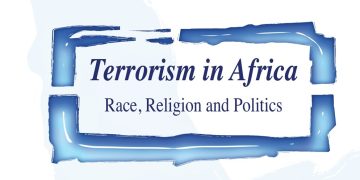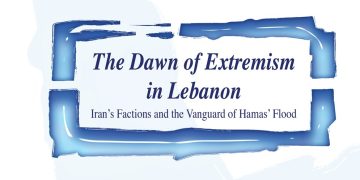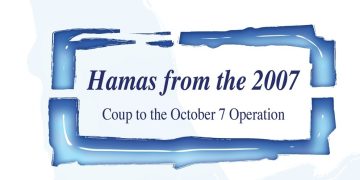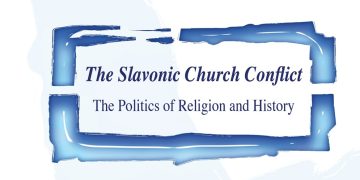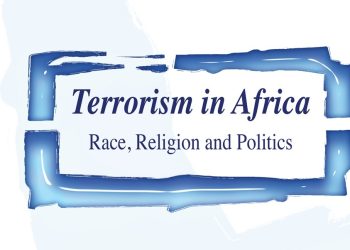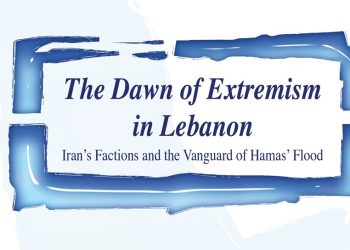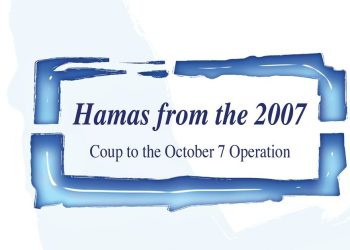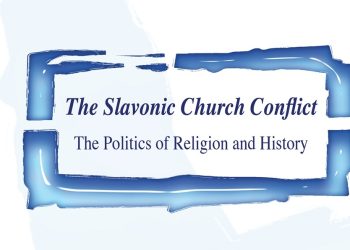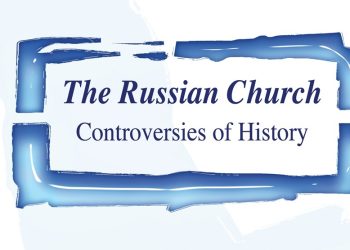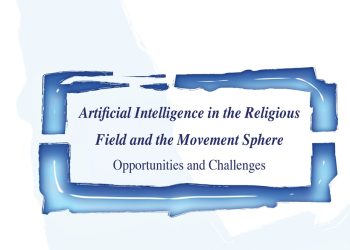Muslims were brought to the southern shores of Africa as slaves, political prisoners, indentured workers and traders, first from the Far East (mainly Indonesia) and then from India in the 19th century. Initially, Muslims were isolated from developments in the rest of the Muslim world. However, with the building of the Suez Canal in the 1869, contact with Muslims in the Middle East and Asia steadily increased. Islam in South Africa developed and grew in the shadow of increasing passenger traffic, radio, global television networks, and of course Internet. Islamism in South Africa provides an excellent illustration of this global contact and local effect. Ideas developed in Egypt and India were quickly transported and taken up in Cape Town, Johannesburg and Durban. Islamism in South Africa was unmistakable in its emphasis on public engagement, politics and identity with distinctive local manifestations. Islamism was an indigenous development of Islamist rhetoric in the context of a modern society, marked by apartheid and post-apartheid realities. Ideas developed elsewhere, particularly in Egypt and South Asia, were filtered into South Africa, but they were adopted to local South African realities. These ideas were principally around the search and discovery of a rhetoric for apartheid and particularly anti-apartheid politics, and for an idiom to articulate Islam in a modern society. Identity was the guiding value in this engagement.
-
Islamism
The phenomenon of Islamism has been applied to a religious movement within Islamic communities and societies in the 20th century. Other terms used to describe this movement are Islamic fundamentalism, resurgence, intégrisme (French) and political Islam. Islamism seems to have become the most popular term among these competing options. The main ideas of Islamism were articulated between the two world wars in response to secular causes and ideologies such as nationalism and socialism. Islamists inserted themselves between traditional religious authorities led by religious scholars (ʿulamāʿ) and secular-oriented intellectuals. They wanted to present and promote Islam as a social and political cause (daʿwa). The founding intellectuals were undoubtedly Ḥasan al-Bannā (d. 1949) in Egypt and Abū ʾl-ʿAlā Mawdoodi (d. 1979) in India. Their ideas were adopted and further developed by intellectuals in other parts of the globe. The Muslim Brotherhood in Egypt became very popular in this early period, but other movements remained fairly marginal until the second half of the 20th century. Then, more people turned against post-colonial governments and ascribed their failure to secular solutions coming from non-indigenous ideologies. In this new context, Islamists proposed Islam as a source of authenticity for addressing the problems of society and politics. Their appeal has since found fertile ground in almost all Muslim communities and societies.
The appeal of Islamism has led to an unsurprising explosion of trends and applications. Al-Banna and Mawdoodi were themselves quite different in approach and emphasis, but differences have intensified as Islamist ideas have been adopted and adapted in different contexts. By the 21st century, Islamism was represented both by democratic trends and radical, revisionists ones. On the one extreme was the Prime Minister of Turkey committed to Islam and to the Turkish secular state, and on the other, Usama ben Laden. And yet, Islamists were a very clearly identifiable group. At the very least, they have been identified by what there not: they were neither secularists, nor ulama. This means that they neither looked for a theology, nor a pure political project of emancipation. In this paper I follow its unmistakable identifiability in South Africa, amidst a variety of trends and differences. And I propose that Islamism should be regarded as a discourse of modern public life, dominated by the attraction of political engagement and a desire for identity.
-
Islam in South Africa
Muslims first arrived on the southern tip of Africa in 1658 from the Indonesian archipelago. For the next 150 years, a steady stream of political exiles, convicts and slaves from the islands of South East Asia and some parts of India established the foundations of a community that has been identified as the Cape Malays. Shaykh Yusuf, a political exile banished to the Cape in 1694, has become a founding symbol for the Muslim community in South Africa (Jeppie, 1995). Muslims were only allowed to establish mosques and schools during the nineteenth century, over a hundred years after Shaykh Yusuf’s arrival. Since then, however, they have become one of the most significant groups in Cape Town. They were often called Cape Malays, and regarded as coloured in the apartheid system of racial classification.
A second distinct group of Muslims arrived from India from 1860 onwards as British indentured labour on sugar plantations, and a little later as independent traders, merchants and hawkers. The latter contributed to the building of mosques, schools and cemeteries, and have since lived mainly but not exclusively in the northern and eastern regions of South Africa. Muslims from further north, particularly Malawi but also Zanzibar, form the third component of Islam in South Africa. Even though less influential than either the Malays or Indians, they have also contributed to the particular ethos of Islam in southern Africa. Finally, conversion has formed another distinct group within South African Islam. During the nineteenth century, the Cape Town region witnessed significant conversions which were assimilated into the Cape Malay community. Missionary activity since the 1950s has led to a more distinctive and notable presence of African indigenous Muslims in the townships of South Africa. They constitute the fourth visible group within the heterogeneous Muslim presence in South Africa (Tayob, 2004).
Religious scholars in South Africa played a very important role in the identity and outlook promoted by Islamists, and a short note on their history and formation is necessary. They first emerged as a distinct group of Islam when freedom of religion was granted in 1804. They founded a number of mosques, closely connected to small congregations (Jeppie, 1996; Lubbe, 1989). After the building of Suez Canal, pilgrimage to Mecca also soon led to study trips that opened the flow of ideas between the Middle East and Cape Town. In the northern region of the country, Indians followed a slightly different tradition. At first, communities invited Imams to lead mosques and provide elementary education to the steadily growing populations. This became a steady stream of ʿulamāʾ from the diverse scholarly traditions of the Indian subcontinent (Tayob, 1999).
A distinctive feature of ʿulamāʾ in South Africa is their self-representation and organization. The first group of Muslim religious leaders to organize themselves were those in the province of Transvaal (1922). They wanted “to give religious guidance to the Muslim community and invited inquiries from the public concerning the Shari`ah” (Naude, 1982, 27.). They were followed by the Cape Moslem Judicial Council in 1945, and a Natal Council of Religious Scholars (jamiat al-ʿulamāʾ) in 1952. Other associations have emerged in the second half of the twentieth century representing new sectarian groupings and new regions. The ʿulamāʾ associations were successful in raising the awareness of Islamic thought and practices. On a corporate level, they also represented a body of scholars and Imams who served the congregations in various regions. With the advent of democracy in 1994, most of the ʿulamāʾ came together to form a common national body without giving up their specific identities. The United ʿUlamāʾ Council of South Africa claims to represent most scholars, and by extension the Muslims of South Africa.
The official census of 2001 reports that Muslims were a mere 1.45% (654064) of the almost 45 million national population. The Asian component of Muslims remains dominant, but Muslims of African origin were estimated to be 11.4% of the total Muslim population (http://www.statssa.gov.za/census01/html/C2001Interactive.asp, accessed June 18, 2010). In spite of their small number, Muslims in South Africa are a highly visible urban group concentrated in the major cities of Cape Town, Durban and Johannesburg. They are well represented in the post-apartheid democratic parliament, and professions like medicine, accountancy and law. They have come a long way from being slaves, indentured labourers and hawkers. Muslims from Malawi have been economically less successful as labourers in factories, farms, and forestry.
-
Islamism in South Africa
With this background, we can now take a closer look closer at Islamism in South Africa. Islamist ideas and rhetoric have been most attractive to youth and professionals exposed to some or other form of modern education. They were critical of the ʿulamāʾ and their devotion to entirely religious and ritualistic aspects of Islam. Most often, they were attracted to the social and political aspects of Islam that they believed were relevant to the country. They eagerly sought Islamist literature to present this particular approach to Islam. They circulated translated essays and pamphlets written by al-Banna, Qutb, Mawdoodi and also Ali Shariati, and later also invited a number of leaders to South Africa. And like Islamists elsewhere, they were never a unified group. These divisions were a product of the diversity of Islamist thought brought to South Africa on the one hand, and the different political trends within the country on the other hand.
-
Islamist Influence in the 1940s and 1950s
The first signs of Islamism in the country are identified among a number of youth, education and propagation organizations founded in the 1940s and 1950s. A review of some of them will illustrate the nature of Islamism that emerged in South Africa in this time. The political dimension of apartheid, and particularly opposition to it, marked an important aspect of these organizations. However, others illustrated equally the demands of modernism felt by young Muslims at the time.
The first of these in Cape Town was the Muslim Teacher’s Association formed in 1951 by teachers and students who attended various Muslim Mission Schools. Their most noteworthy activity was active protest against the newly-founded apartheid state in 1948. The Muslim Teachers’ Association opposed Muslim participation in the Voortrekker Celebrations organized in 1952 to commemorate the Afrikaner expansion into the interior. They were particularly opposed to the endorsement that some ʿulamāʾ within the Moslem Judicial Council were prepared to extend to the Celebrations. Similarly, they also campaigned against a book written by an apartheid ideologue on the Cape Malays. They identified I.D. du Plessis’ book as an ethnology that an apartheid idea of culture, against which they promoted a universal Islamic identity instead: “the book propagates Islam as a Malay religion, whereas Islam is a universal religion and has only one law for all Muslims throughout the world” (cited in Jeppie, 1987, 80.).
Two other youth organizations, the Cape Muslim Youth Movement (est. 1957) and the Claremont Muslim Youth Movement (est. 1958), followed very similar political activities. These were founded at mosques in Cape Town. The Claremont Muslim Youth Movement was founded by a young Imam, Abdullah Haron, for high school students. He opened the doors of the mosque to them, encouraging them to lead prayers and to bring the issues that affected for deliberation. One of the significant activities organized at the mosque was to host speakers from various anti-apartheid organizations in the city. Without regard for religious background of the speakers, Muslim students and worshipers at the mosque were introduced to the current debates and protests against the apartheid regime. Islamist literature was useful for turning this political culture into an Islamic mode. The Claremont Movement published a number of issues of a newsletter The Islamic Mirror, carrying articles from Mawdoodi, of the Jamate Islami of Indian, and Sayyid Qutb of the Egyptian Muslim Brothers (Haron, 1986, 169.). The Claremont Movement, under the leadership of Imam Haron, became more involved in the anti-apartheid movement. The young students and activists mobilized Muslims across the region to this cause. Eventually, the South African security police arrested the Imam and killed in 1969 (Omar, 1987).
The Muslim Assembly was also an association that dates to this period, but with a very different political outlook. Founded in 1967 by a medical doctor (Dr. Hasan Kotwal) and other professionals, it aimed to “cater for the spiritual, moral, educational and economic upliftment of the Muslims” (Omar, 1987, 38.). According to Omar and Haron, they maintained a neutral and lukewarm approach to political mobilization against apartheid promoted. At the same time, they were opposed to the ʿulamāʾ and were in turn treated with some caution for their non-clerical background (Haron, 1986, 96.).
Similar organizations were founded in Durban and to a lesser extent Pretoria and Johannesburg (in the then province of Transvaal). The organizations in these cities seemed uninterested in politics, but their Islamist nature is evident in promoting the relevance of Islam in broader social issues. In fact, the modernist dimension of these organizations was much clearer than reflected in the Cape Town-based organizations. The Natal Muslim Council (NMC) was founded in 1942 as an umbrella body to represent Muslim organisations across the province of Natal. It was probably one of the first to include women as full members. It was engaged in a number of social activities, but it made a bold attempt to promote quality secular and Islamic education among Muslims, for both men and women. It organized two conferences on Muslim education in 1944 ad 1952 in order “awaken the consciousness of the Muslim public to their general backwardness and inspire them to undertake measures leading to their regeneration and progress;” and in order to graduate Islamic religious leaders “qualified in religion, modern technique and modern education”. It particularly wanted religious scholars “trained in the peculiar conditions which prevailed in country, aware of our great problems and trained to confront them while being free of any trammels binding them to outside sources of instructions” (Moolla, n.d., 7-8.).
A resolution taken at its second education conference on the importance of Arabic language was the foundation for an organization that has outlived the Natal Muslim Council. Founded in 1950, the Arabic Study Circle was at the forefront of the innovation and dynamic projects embarked upon in the city. They promoted a modernist approach to Islam, relevant to the realities of modern South Africa, and opposed the traditionalism of the ʿulamāʾ. In the 1950s, moreover, they produced a number of issues of a newsletter called Al-Muʿminūn (the Believers) that reflected these views. They invited a number of intellectuals to the shores of South Africa, introducing them to Islamic modernist and Islamist ideas (Jeppie, 2007).
In this early period, it is clear that Islamist ideas were circulated by these youth organizations in their newsletters and pamphlets. It is difficult to say, however, if these had any specific impact on the direction of the movements and organizations. What is clear, though, is Islamist tendencies were clearly evident. Young urbanized Muslims in various cities of South Africa seemed to desire a very different approach to Islam. And two distinct trends emerged within the groups. The first was a political engagement in the name of Islam in Cape Town. Young Muslims there favoured an Islamic anti-apartheid mobilization, very similar to that taking place within nationalist and socialist movements in the country. There was some reluctance to embrace this political direction among some in Cape Town, but the apolitical trend was much clearer in Durban. Here, the trend was more clearly directed at some form of modernization. The Durban organizations attempted to represent Islam in a very different way from the current ʿulamāʾ. In both societies, in fact, there was clearly a mutual antagonism between the ʿulamāʾ and these youth and professionals trained in secular universities, colleges and high schools. Hence, public engagement around Islamic identity was common among these very different groups.
-
Islamist Mobilization 1970s and 1980s
Islamist influences and developments became even clearer in the 1970s and 1980s. Many more Muslim students joined tertiary universities and colleges than ever before, and they began to express their religious identities at these campus. In this period, student and youth movements emerged that were more directly influenced by global Islamist developments and movements than ever before. Four of these movements made a lasting impact on the shape of Islamism in South Africa, and are worthy of identification. Each will be discussed separately, but it will become clear how closely there were connected with each other.
The Muslim Student Association was formed in 1969 in Cape Town (Omar, 1987, 49.), and then launched on a national scale in 1974 at campuses throughout the country. The main purpose of the student organizations was to organize prayer facilities at Universities, and organize social and religious events for students. They held national conventions and camps at which students from different campuses came together. Both national and local campus organizations were led by elected students. They produced a large number of pamphlets and newsletters, mostly written by students but also culled from international Islamic literature. One of their significant publications was an annual magazine Inqilaab (revolution) that was sold in Ramadan for funds to sustain the activities of the organization.
The Muslim students were directly affected by rising anti-apartheid politics in the 1970s and 1980s. These were the decades of intense mobilization of South African youth in resistance to apartheid. In the first half of the 1980s, the Muslim Students expressed their protest against apartheid in their publications, demonstrations and meetings (Jeppie, 1991). Their publications reflect a range of tendencies, from Islamist ideology, to criticism of South African state policies, to general religious concerns. A dossier compiled for a national convention in 1986 reveals one aspect of this diversity. It opens with an article on education, followed by a recommendation to pray in congregation, an editorial on youth leadership, and a book review by Ali Shariati on Sayyid Qutb’s In the Shade of the Quraan. It then also contained short articles with the following titles: “A Message to the Muslim Youth”; “Islam, a Revolutionary Ideology”, “Tauhid”, “Jihad” and “The Islamic Movement”. This is concluded with a list of verses from the Qur’an in parallel translation (Arabic and English); a list of ḥadīth (prophetic statements), and a final short guide to self-examination (“Guidelines for Muhasabah”).[1] The final section was intended to be memorized by participants.
The Muslim Student Association played a significant role in organizing Muslim students on campuses and inducting them to religion, politics and public life. Moreover, they introduced them to the political challenges of the country in an Islamic idiom. There was no clear ideological preference between conservative and anti-apartheid activism as student preferences changed over the years. Nevertheless, they remained open to various Islamist writings, and the public relevance and value of Islam dominated the writings, talks and meetings.
The Muslim Youth Movement who worked closely with student activists but promoted a clearer ideological view and a more stable organization structure. Launched in 1970, the Muslim Youth Movement was founded by professionals and young businessmen in Durban. Advocate Abu Bakr Mohamed and businessman Ebrahim Jadwat became the leading figures in the early years. Mohamed later broke away to found another organization, the Islamic Council of South Africa, but Jadwat remained its guiding light. The Muslim Youth Movement reflected the concerns of the Durban organizations discussed earlier, and for most of the first decade also their apolitical outlook. The members of the organization promoted the participation of women, and also black indigenous Muslims. They promoted the visibility of Muslims in all spheres of life, thereby projecting a strong sense of Islamic identity in their public activities. They set up a newspaper in 1974 called al-Qalam; founded a missionary movement (Islamic Da’wa Movement); established a book and tape service which later became a chain of bookstores (International Book Services); set up a national zakāt collection fund (1977); and formed professional bodies for Muslim medical doctors, accounts and lawyers. Clearly, the Muslim Youth Movement wished to Islamize South Africa anew. The Muslim Youth Movement quickly spread to all towns and cities of South Africa, and became the first national Muslim organization with 19 braches in Natal, 14 in the Transvaal and 3 in the Cape by 1978 (Tayob, 1995b, 111.).
The Muslim Youth Movement organized annual conventions and later training programmes for its members. These conventions were addressed by prominent international guests, the first of whom was Mawlana Fazlur Rahman Ansari (d. 1974) from Pakistan from the World Federation of Islamic Missions (http://www.wfim.org.pk/ , accessed June 21, 2010). Ansari was a prolific traveller spreading the message of Islam to modern-educated Muslim youth in a number of countries, supporting them against Christian missionaries and persuading them of the relevance of Islam in the modern world.[2] Another speaker who made a strong impact was Dr. Ahmad Sakr (1973), a medical doctor who was also founder of the Muslim Students Association in North America. In keeping with the goal of including women and indigenous Black Africans in the organization, the organization invited the German-based Fatima Heeran (1976) and an African-American, Dr. Rashad Din Malik from the United States in 1977. However, there were speakers who clearly stood out in their significant contribution to the Muslim Youth Movement’s systematic exposure to the Islamist traditions. The first was Jamal Badawi, an Egyptian-born Canadian who visited the organization in 1976 and 1978. In his second visit in 1978, he led a Leadership Training Programme at which he introduced the Muslim Youth Movement to the ideas and methods of the Muslim Brothers, particularly the writings of Hasan al-Banna and Sayyid Qutb. Rafi’ al-Din Malik, a member of the Jamaate Islame, introduced South Africans its hierarchical structure: pillars (arkān); rufaqāʿ (friends) and supporters. By 1980, the MYM had a total of 316 signed supporters, 157 friends and 63 pillars, and this structure was strictly followed until 1987. Visitors linked to the Muslim Brothers and the Jamaate Islami came regularly in the next ten years, promoting and entrenching its links with Islamist ideas and organization, but also providing the grounds for departing from established trends.
With the support of these international speakers, the Muslim Youth Movement established a network of reading and discussion groups. Drawing on its Islamist inspiration, these circles were called halaqāt (circles), and met once a week to read portions of the Qur’an in translation, prophetic statements, chapters and articles from the Islamist library, and to discuss contemporary issues facing the society. The Muslim Youth Movement itself published or reprinted Islamist material in cheap and accessible form. Most of the literature came from the Saudi-based World Assembly of Muslim Youth with which it maintained active contact. The literature included the lectures of Hasan al-Banna, the writings of Sayyid Qutb and the pamphlets of Mawdoodi. There was not necessarily any limitation to these authors. The halaqāt opened the door to modern Islamic literacy, and quickly accommodated Ali Shariati and Mutahhari when the Islamic revolution made its impact. Later, the halaqāt also provided the avenue for a critical engagement with the Islamist tradition as well.
Up to the early 1980s, global Islamist visitors and ḥalaqāt literacy produced a set of ideas around Islam as ideology, Islam as a way of life, and the message of Islam for South Africa. For the Muslim Youth Movement, Islam was not a religion or a set of rituals to be performed, but a way of life. The “way of life” became a strong argument against what was considered to be a narrow definition of religion limited to personal and ritual adherence. Islam had its own ideology that could favourably be compared with capitalism and socialism. It had own methods for individual values and social engagement. Obviously, the life of the Prophet Muhammad and the early Islamic period provided the model for this comprehensive system. The Muslim Youth Movement saw itself as a vanguard for this new Islamization.
The Muslim Youth Movement developed its structures and ideology in a period of intense political conflict in South Africa and in the Muslim World, both of which could not be ignored for too long. The success of the Islamic Revolution in Iran provided the first challenge. And soon, in 1983, the apartheid state presented its own challenge when it proposed so-called reforms by inviting Indians and Coloureds into a Tri-Cameral Parliament with a new constitution. These limited reforms became the impetus for renewed and nation-wide protests, which no social and political organization could ignore. These two challenges led to the emergence of Islamist movements in South Africa of a very different kind that will be discussed below. Over the course of the 1980s, however, the Muslim Youth Movement changed its approach to Islamism in very distinctive ways. It maintained both the ḥalaqāt and the training camps, but began to look at its engagement with Islam and with South Africa in a critical light.
Internal deliberations on how to respond to Iran and South African politics were already fully under way when Khurram Murad was invited to lead the Islamic Training Programme in 1984. Murad was a close confidante of Mawdoodi based in the United Kingdom. He kept the focus on the legacy of his mentor, but suggested that Islamic movements working in different political contexts should change their approach. Rather than attempting to win a major ideological victory, Islamists should target key institutions of civil society, and win them over to Islam. Murad was followed by other visitors like Fathi Osman (Egypt) and Parvez Mansoor (Pakistan) who made an indelible impression with both their commitment to Islam, and their critical engagement with the Islamic tradition.
Some of the Cape and Natal leaders in the Muslim Youth Movement took these reflections as a justification and framework for unconditional involvement in South African resistance politics, and to reconsider the Islamist literature that there had adopted and promulgated in the country. They soon directed the organization away from the Islamist ideologues like Mawdoodi and Qutb, and joined other movements, Islamic and otherwise, in social and political struggles. Two leaders emerged as charismatic figures in this engagement. Ebrahim Moosa, a seminary graduate of India, had returned to South Africa and joined the organization. Introducing new materials for the ḥalaqāt, he steered the organization to adopt a contextual approach to Islamic texts that was proposed by the Pakistani modernist Fazlur Rahman (d. 1986). Abdul Rashied Omar supported him from his position as Imam in the Claremont Main Road. By 1987, Omar took on the presidency of the organization and asked all members to commit themselves to the political liberation of the country. With these new developments, the Muslim Youth Movement threw itself in anti-apartheid activism, took a critical approach to the tradition of Islam, and set up alliances with Christians, socialists and others against the apartheid state. Its major symbol of contextualization provided it with great latitude to represent themselves as Muslims, but to involve themselves in the protests and debates of the period. These included anti-apartheid activism, but also women’s rights, workers and military conscription.
The Islamic Revolution of Iran provided the ground for a different Islamist organization to emerge in the country, with a very different approach to the politics of the day. Founded in 1981 at the mosque headed by the slain Imam Haron, Qiblah Mass Movement adopted the revolutionary message of Iran and applied it directly to the context of South Africa. The organization was founded and closely associated with Achmat Cassiem, who has remained its charismatic leader. Cassiem was involved in anti-apartheid campaigns since he was a high-school student in 1964. He was imprisoned for 5 years under the Sabotage Act, and immediate banned for another five. He was then detained and banned regularly until the end of apartheid.[3] Under his leadership, Qiblah challenged the state at rallies, mosque meetings and funerals of persons slain by the police. Qiblah drew on the support of Muslims, mainly in Cape Town but also in other regions, who were more clearly and unequivocally committed to political mobilization against the state. By 1984, it had decided to join the armed struggle against the apartheid state. The apartheid state applied its full power against the organization (Jeppie, 1991).
Cassiem was invited to the Muslim Youth Movement’s Islamic Leadership Programme led by Jamal Badawi, but he was not persuaded. For Cassiem, the Islamic revolution provided a more persuasive model for Islam’s opposition to oppression. For Cassiem, the regime of the Shah was a variation of the apartheid regime, and the methods employed in Iran were applicable in South Africa. Cassiem and Qiblah popularized the sayings and image of the leader of the revolution, Ruhuallah Khomeini, in the streets of Cape Town. In fact, one can go further and state that Cassiem styled himself as the Imam of the South African Islamic revolution (Gevisser, 1996). Cassiem also became very critical of the ʿulamāʾ in Cape Town, and what he regarded as their complacency with the apartheid regime. The ʿulamāʾ in turn were alarmed at the influence of Shi’ism through Qiblah and Cassiem.
Like the Muslim Youth Movement, Qiblah produced a large number of pamphlets, bulletins and other documents since its formation. The main texts were mostly written by Cassiem, and help us to identify his outlook. For Cassiem, Islam was a revolutionary ideology committed to eradicate oppression from the face of the earth. This revolutionary line began with the Prophet Muhammad, and continued in South Africa with Shaykh Yusuf when he was brought here as a political exile, with Imam Abdullah Haron in the 1960s, and then with the mujāhidīn within Qiblah arrested by the apartheid state. For Cassiem, the Iranian ʿulamāʾ were particularly applauded for preserving this revolutionary tradition when Arab scholars were enticed by foreign ideologies. The revolutionary ideology of Islam was brought into life through jihad (struggle), sacrifice and martyrdom. It called for an acute consciousness of this essential message of Islam, and of the responsibility for Muslims to respond to oppression everywhere. Within South Africa, Qiblah saw Muslims as the vanguard of a revolutionary ideology leading the people of South Africa to freedom and liberation. Like other Islamist organizations, Qiblah drew parallels between the struggles of Muslims in the country, and other Muslims. The struggle of the Palestinians against Israeli policies was a focal point of Qiblah’s many marches and protests. Furthermore, many of Qiblah pamphlets and bulletins were accompanied by photographs of Iranian mujāhidīn, including men, women and children, bearing arms and other weapons.
Another movement embraced the struggle against apartheid from a different perspective. The Call of Islam emerged in 1984 from within the ranks of the Muslim Student Association and the Muslim Youth Movement. The new organization was led by Farid Esack, Ebrahim Rassool and Imam Hasan Solomons. Esack and Solomons had been pillars (arkān) in the Muslim Youth Movement and like Ebrahim Moosa had returned from seminary training in South Asia. He was also active in re-orienting the Muslim Youth Movement to the anti-apartheid struggle. Rassool was an active member of the Muslim Students Association at the University of the Western-Cape. The Call of Islam maintained a strong sense of Muslim identity in the struggle, but insisted that the apartheid state did not particularly oppress or marginalize Muslims for being Muslims. The root cause of the South African condition was racism and capitalism, which called for an alliance of the oppressed peoples. The Call of Islam decided to align itself with the United Democratic Front (est. 1983), founded to lead the protest and that many saw as the internal wing of the African National Congress. Cassiem and Qiblah bitterly opposed the United Democratic Front, while the Muslim Youth Movement maintained what it called “postive neutrality” (it would oppose apartheid but not join the United Democratic Front) (Tayob, 1990).
The Call of Islam also produced its own library of pamphlets and documents, and organized study circles (ḥalaqāt) for its growing number of members. The writings and readings in the circle of the organization did not propose a distinctive ideology of Islam, but pointed to important values that Muslims could draw on from their religion and ritual practices. These values of justice, opposition to oppression, fairness, sharing and humility needed to be applied in the critical political situation faced by all in the country. It particularly presented the Prophet Yusuf as a model for Muslims living in the midst of an oppressive state. It also showed how Muslims living under apartheid could not be separated from other oppressed people. In its pamphlets, it brought out the role of Muslim political activists and placed them alongside Christian, Jewish and even atheist comrades. It lauded the actions of young Whites who refused to serve in the Defence Force of the country. Another strategy evident in the pamphlets is how the Call of Islam created a bridge between the everyday religious practices of Muslims, and the challenges facing oppressed South Africans. Fasting, pilgrimage and everyday prayer provided values for commiseration, steadfastness and struggle against great difficulties. The Call of Islam pamphlets were wary about openly antagonizing Muslim sensibilities, but they were also bold on some important issues. They were critical of the role and position of women in Muslim society, and wasted no effort to point to leadership positions that Muslim women had taken in the South African struggle. Furthermore, they were also committed to inter-faith cooperation against apartheid. However, on two very sensitive issues, the Call of Islam sided with the Muslim majority. In a theological debate over the Ahmadiyya sect, the Call of Islam supported the ʿulamāʾ in their condemnation by pointing to their alleged complicity with the British colonial regime in India. When the Weekly Mail invited Salman Rushdie at its Book Fair in 1987, it joined Muslim protest. However, the Call of Islam was cautious in not calling for Rushdie’s banning, but directed its appeal to Muslims, particularly its leadership, to join the protest ref.
-
End of Apartheid and Democracy
When President de Klerk announced the unbanning of anti-apartheid political parties and the end of apartheid in 1990, the Islamist organizations had produced a rich discourse on Islam, politics and identity. In this final section, I want to briefly point to how the principal organizations further developed Islamist ideas and tactics. The Muslim Youth Movement and Call of Islam had drawn close to each other in terms of outlook, but they took different political roles with respect to the new ruling party, the African National Congress, and engagement with Muslims on reforms in the society. Qiblah, on the other hand, continued its Islamic oppositional rhetoric and employed it in new forms.
The Call of Islam had been part of the United Democratic and naturally joined the African National Congress when it was unbanned. It is used its resources and literature to support negotiations that the Congress was engaged in with the apartheid state. Particularly in the run-up to the first elections, the Call of Islam continued its pamphlets, newsletters and talks to persuade Muslims to vote for the ANC. In the next few years, its leadership also worked closely with the ulama, preparing them to respond constructively in the new democratic state. One of the founders of the Call of Islam, Ebrahim Rassool, was elected to a number of powerful positions, and in 2004 became Premier of the Western Cape as a leader within the African Na tional Congress. From this influential position, Rassool used his talks and public statements to develop an Islamic rhetoric of democracy. He focused on the gains made by Muslims in South Africa under democracy; pointed them to aspects in the life of the Prophet Muhammad where he compromised with his enemies (Hudaybiyya); and urged Muslims to break the barriers (racial and religious) within which they had enclosed themleves. (Rasool, 2006; Rasool, 2007) Ref Other Call of Islam leaders in Cape Town and Johannesburg also held influential government positions, but Rassool became the coherent and consistent voice of Islam and democracy in South Africa.
The Muslim Youth Movement maintained its neutrality with respect to a particular party, but supported the development of democratic structures. Its newspaper, Al-Qalam, faced severe financial difficulties but managed to project an extremely positive approach to the development of the new nation and state (Tayob, 1995a). Within the Muslim communities in Johannesburg, Durban and Cape Town, it promoted rights of women and the poor, and generally liberal interpretations of Islam. Moreover, in the last two decades, the Muslim Youth Movement had dedicated itself almost exclusively with African indigenous youth. In various ways, as part of its continuing emphasis on contextualization, it has attempted to promote an African Islamic culture for South Africa.
Qiblah took a very different approach to the state. It campaigned vociferously against the negotiated settlement between Nelson Mandela and the apartheid government. It refused also to participate in the development of a religious charter that was promoted by the Call of Islam and the Muslim Youth Movement. Quote More importantly, on the eve of the elections, it founded an umbrella body, called the Islamic Unity Convention, to represent the interests and values of Islamic ideology. Cassiem maintained a prominent leadership in this organization, and its most articulate spokesperson. The Islamic Unity Convention also applied for and obtained a licence for a community radio station. This became one of the major paths through which it has maintained a dominant voice, particularly in Cape Town and the greater Western Cape, on Islam and politics.
Cassiem also became a spokesperson, some claim the key ideologue, for another organization that is closely associated with Islamism. People Against Gangsterism and Drugs (PAGAD) emerged in 1995–6 as a group determined to rid the Cape Flats of Cape Town of its gang and drug lords. PAGAD organised a series of public campaigns against prominent drug dealers, and grew in support and strength across the city of Cape In 1996, it organised a march to the house of a gang leader, Rashad Staggie, in Salt River, close to the city centre of Cape Town. A confrontation developed between PAGAD members and Staggie, during which the gang leader was shot and set alight, in full view of national and international media. From this point, PAGAD was set on a collision course with both the gangs and the state. The city of Cape Town became the target of a series of homemade bombs and shootings, many, but not all, for which PAGAD was blamed.
PAGAD has maintained that it is not an Islamic organisation. It has often pointed to its multi-religious composition at its launch, and its generally moral mission. And yet, it has employed a range of Islamic symbols in its campaigns. It organised many of its main rallies in large mosques; used verses of the Qur’an to mobilise supporters to wage a united battle against drugs and gangsters; organized mass Friday prayers; and generally framed most of its rhetoric in Islamist terms. PAGAD tactics illustrate how Islamist ideas had become part of a wider audience in South Africa. Even though the place of PAGAD remained doubtful, Islamist discourse could be employed outside of the organizational history of Islamist movements.
Conclusion
Esack divided the Islamist organization into three strands divided in terms of their commitment to South Africa. The Muslim Youth Movement, according to Esack, was tied to Islamist movements in the Muslim world until they were transformed; Qibla was following the behest of Iran; while only the Call of Islam was committed to South Africa (Esack, 1988). This early analysis reflected the view of Muslim activists as they debated alignement with secular liberation movements, but is an over-simplification of how Islamism encountered the aspirations and challenges faced by Muslim youth and students in these two decades. Even Cassiem’s rhetoric reveals a crafting of Islamic revolution for South Africa. Islamism in South Africa reflected a confrontation between Islam and modernity, and Islam and the apartheid state. Both were important and clearly discernable in the motivations and directions taken by the youth. There was a tendency among some students and activists based in Cape Town to see Islamism as a means through which to confront the oppressive apartheid state, in contrast with Indian youth who avoided open confrontation. Class differences clearly played a role in this different response.
The history of Islamism in South Africa presents an opportunity to reflect on the common themes binding the diverse, and often highly competitive Islamist movements, with each other. In spite of their diverse ideologies, Islamists are promoting or searching for a new ideology. They have used the terms ideology, outlook and vision to speak of their distinctive approach from other Muslims. They have not focused on a unique theology or Sufi perception. Humphreys wrote an interesting article in the aftermath of the Islamic revolution that suggests the basis for this common identification. He argued that Islamist individuals and movements turned to ideology to frame their projects and ideas. Islamist movements have no precedent in Islamic history. Responding to the demands of urbanization, they have produced a new language with which to talk about Islam. Islamists proposed an ideology for mainly urban youth that drew freely from pre-modern symbols, and contemporary social and political movements: “Islam is … reified into a fixed and eternal body of ideal doctrine, not subject to human hypothesis or revision, which is readily available to anyone who cares about it (Humphreys, 1982, 76.). Many other scholars have emphasized this promotion of Islam as ideology (and not theology, religious praxis or experience). The new language of ideology includes a selection and simplification of symbols from the past and current political movements, and its ready application in modern contexts (Abu-Rabi, 1996, 9.; Kepel, 2002, chp. 1.; Martin, 2000). This distinctive outlook represents a self-understanding, as well as an analysis of how Islamists may be identified from other Islamic groups.
At the same time, it should not be forgotten that Islamist ideas were also adopted as a modernist response by Muslim youth. This was most clear in the Arabic Study Circle in the 1950s, but evident in the whole history of Islamism in South Africa. For these youth and professionals, the writings of Mawdoodi and Qutb presented a contemporary idiom for articulating Islamic values and identity. One aspect of this modernity was the tense relation and confrontation that emerged regularly between the ulama and the youth movements. The ulama were clearly projected as traditional, backward or irrelevant. This modernist binary was a significant part of Islamist identity. This feature of Islamism has been emphasized in different ways by various scholars of Islamism. Lawrence saw Islamism as a response to modernization and modernity that disrupted and transformed almost every part of the world. According to Lawrence, theirs is a “last-ditch” defence of God ( Lawrence, 1989). Others have pointed to the impact of modernity, both positive and negative, within Islamic thought (Euben, 1997a; Euben, 1997b; Fisher and Abedi, 1990, 153.). Islamism is engaged in the reformulation of an outlook informed by modernity as much as it is by Islam. This aspect of modernity in Islamism is clearly visible in all the trends in South Africa. Cassiem’s revolutionary ideology and the Muslim Youth Movement’s contextualism were products of engagement with modern political ideologies. On the other hand, the modernizing apolitical movements were also adopting various modes and values of culture in modern, liberal societies.
The third prominent feature of Islamism in South Africa is its engagement in the politics of identity. The politically active in the 1950s were inspired by secular political movements, but they wanted an Islamic idiom for this articulation. The 1970s and 1980s were marked, without exception, by a desire to have Islam represented in the public sphere of anti-apartheid politics. They differed about what kind of politics Islam should be associated with, but they all wanted Islam to carry their political aspirations and ideologies. Islamists in general have promoted Islam against foreign, mainly Western influences. Their appeal to identity has thrived in contexts where identity was destabilized (such as the case in apartheid), or failed (as national identities in post-colonial states). Islamist appeal worked on collective levels (indigenous states, institutions, financial networks and even sciences); and on individual levels (modes of dress and behaviour) (Burgat, 2003, 50.; Modood, 2001; Nielsen, 2001; Roy, 2003). Islamists claim an authentic identity against other competitors (language, ethnicity and nation). The result might be a combination of these, but the self-proclaimed choice would be on Islam as unique and authentic.
Abu-Rabi, Ibrahim. The Intellectual Origins of Islamic Resurgence in the Modern Arab World. State University of New York Press, 1996.
Burgat, François. Face to Face With Political Islam (L’Islamisme En Face). London: I. B. Tauris & Co. Ltd, 2003.
Cassiem, Imam Achmad. 2005. Muslims Struggle Against Apartheid: Neither Oppressed Nor Oppressor be. http://www.islamonline.net (accessed March 8, 2007).
Esack, Farid. “Three Islamic Strands in the South Africa Struggle for Justice.” Third World Quarterly 10, no. 2 (1988): 473-98.
Euben, Roxanne L. “Comparative Political Theory: An Islamic Fundamentalist Critique of Rationalism.” The Journal of Politics 59, no. 1 (1997a): 28-55.
Euben, Roxanne L. “Premodern, Antimodern Or Postmodern? Islamic and Western Critiques of Modernity.” The Review of Politics 59 (1997b): 429-59.
Fisher, Michael J., and Mehdi Abedi. Debating Muslims: Cultural Dialogics in Postmodernity and Modernity. Madison: The University of Wisconsin Press, 1990.
Gevisser, Mark. 1996. The Imam of the Flats. http://www.mg.co.za/articledirect.aspx?articleid=191378&area=%2farchives%2farchives__print_edition%2f (accessed June, 1, 2007).
Haron, Muhammed. “Imam Abdullah Haron: Life, Ideas, and Impact.” (1986):
Humphreys, R. Stephen. “The Contemporary Resurgence in the Context of Modern Islam.” In Islamic Resurgence in the Arab World, edited by Ali E. Hillal Dessouki, 67-83. New York: Praeger, 1982.
Jeppie, M. Shamiel. “Historical Process and the Constitution of Subjects: I. D. Du Plessis and the Re-Invention of the “Malay”.” University of Cape Town, 1987.
Jeppie, Shamil. “Amandla and Allahu Akbar: Muslims and Resistance in South Africa C. 1970-1987.” Journal for the Study of Religion 4, no. 1 (1991): 3-19.
Jeppie, Shamil. “Politics and Identities in South Africa: Reflections on the 1994 Tri-Centenary Celebrations of Islam in South Africa.” (1995):
Jeppie, Shamil. “Leadership and Loyalties: The Imam of the Nineteenth-Century Colonial Cape Town, South Africa.” Journal of Religion in Africa 26, no. 2 (1996): 139-62.
Jeppie, Shamil. Language, Identity, Modernity: The Arabic Study Circle of Durban. Pretoria: HSRC Press, 2007.
Kepel, Gilles. Jihad the Trail of Political Islam. Translated by Anthony F. Roberts. London: I. B. Taurus, 2002.
Lawrence, Bruce B. Defenders of God: The Fundamentalist Revolt Against the Modern Age. Harper and Rowe, 1989.
Lubbe, Gert Johannes Alwyn. “The Muslim Judicial Council – a Descriptive and Analytic Investigation.” University of South Africa, 1989.
Martin, Vanessa. Creating an Islamic State: Khomeini and the Making of a New Iran. London: I.B. Tauris, 2000.
Modood, Tariq. “De Plaats Van Moslims in Het Britse Seculier Multiculturalisme.” In Naar Een Europese Islam?, edited by Dick Douwes, 51-75. Amsterdam: Mets and Schilt, 2001.
Moolla, A. M. The Problem of Muslim Education. Natal Muslim Educational Committe. Durban: Natal Muslim Educational Committee, n.d.
Naude, J. A. “The ʿUlamaʾ in South Africa With Special Reference to the Transvaal ʿUlamāʾ.” Journal for Islamic Studies 2 (1982): 23-39.
Nielsen, Jorgen. “Flexibele Identiteiten: Moslims En De Natiestaten Van West-Europa.” In Naar Een Europese Islam?, edited by Dick Douwes, 21-49. Amsterdam: Mets and Schilt, 2001.
Omar, Abdul Rashied. “The Impact of the Death in Detention of Imam Abdullah Haron on Cape Muslim.” University of Cape Town, 1987.
Rasool, Ebrahim. 2006. Speech Delivered By Western Cape Premier, His Excellency Ebrahim Rasool At the Official Launch of the International Symposium on Islamic Civilisation in Southern Africa. http://www.awqafsa.org.za/Library%20&%20Resources/Symposium%202006/Premier%20Ebrahim%20Rasool%20Speech%20Leewenhof%2028062006.doc (accessed June 24, 2010).
Rasool, Ebrahim. 2007. A Necessary Conversation. http://www.awqafsa.org.za/Library%20&%20Resources/Symposium%202006/Premier%20Ebrahim%20Rasool%20Speech%20Leewenhof%2028062006.doc (accessed June 24, 2010).
Roy, Olivier. Globalised Islam: Fundamentalism, De-Territorialisation and the Search for the New Ummah. London: Hurst & Co, 2003.
Tayob, Abdulkader. “Race, Ideology, and Islam in Contemporary South Africa.” In Islam in World Cultures: Comparative Perspectives, edited by R. Michael Feener, 253-82. Santa Barbara, California: ABC CLIO, 2004.
Tayob, Abdulkader I. “Muslims’ Discourse on Alliance Against Apartheid.” Journal for the Study of Religion 3, no. 2 (1990):
Tayob, Abdulkader I. “Civil Religion for Muslims in South Africa.” Journal for the Study of Religion 8, no. 2 (1995a): 23-46.
Tayob, Abdulkader I. Islamic Resurgence in South Africa: The Muslim Youth Movement. Cape Town: UCT Press, 1995b.
Tayob, Abdulkader I. Islam in South Africa: Mosques, Imams and Sermons. Gainesville: University of South Florida Press, 1999.
[1] The dossier is entitled “Islam, a mission, a movement; Muslim Students Association Convention ’86, As-Salaam”. The 1988 issue of Inqilaab reveals a similar diversity. The titles of the main articles: Our Right to Lead as Muslims; Human Rights in the Qur’an; Qur’an and Good Behaviour; Islam and Lies; Nationalism and Cultural Domination; Women’s Liberation and the Emancipation of Women; Labour Relations Bill: An Attempt to Suppress Trade Unions; The Muslim Commitment: Practical Involvement towards post apartheid South Africa; Ibn al-Nafis (Discoverer of the Circulation of Blood); Factors Associated with Health and Disease; Training and Education of Children; Sharia: A solution to contemporary Problems.
[2] He books, audio cassettes and lecture continue to have a following in South Africa (http://www.fazlurrahmanansari.org/?page_id=26, accessed June 21, 2010). See also his transcribed lectures: Mohamed, Y. (editor), Kriel, M. (transcriber), & Daniels, A. (assistant). (Eds.). (1999). Islam to the Modern Mind: lectures to the modern mind. Gatesville, Cape Town: Hidden Treasure.
[3] Qiblah pahmplet “Islam under Attack,” undated (1986). See also (Cassiem, 2005)


